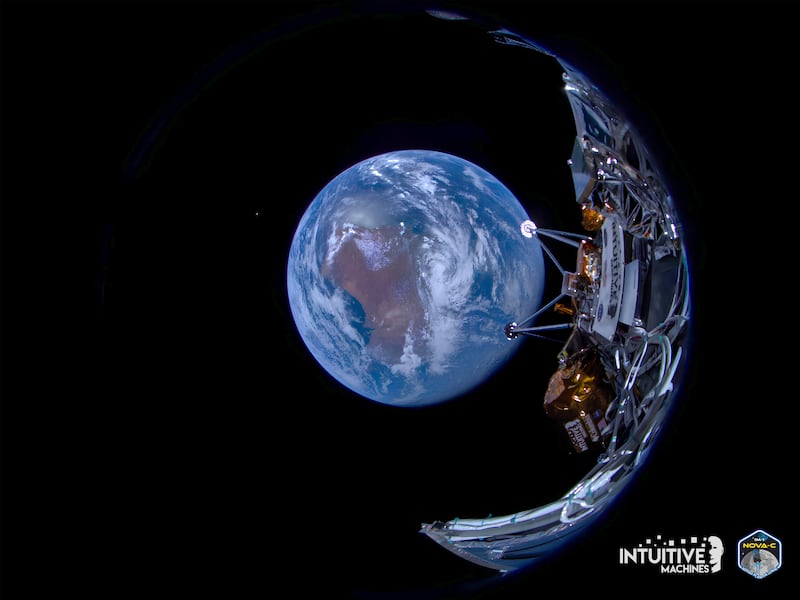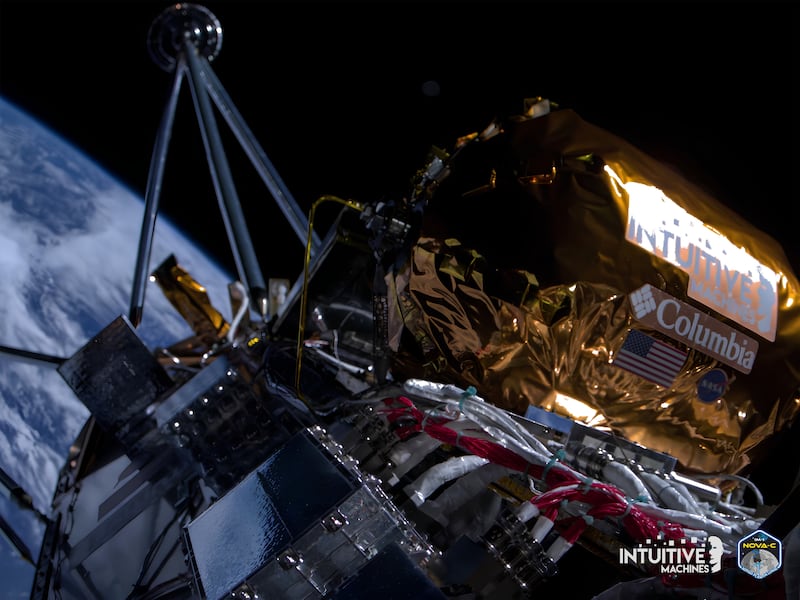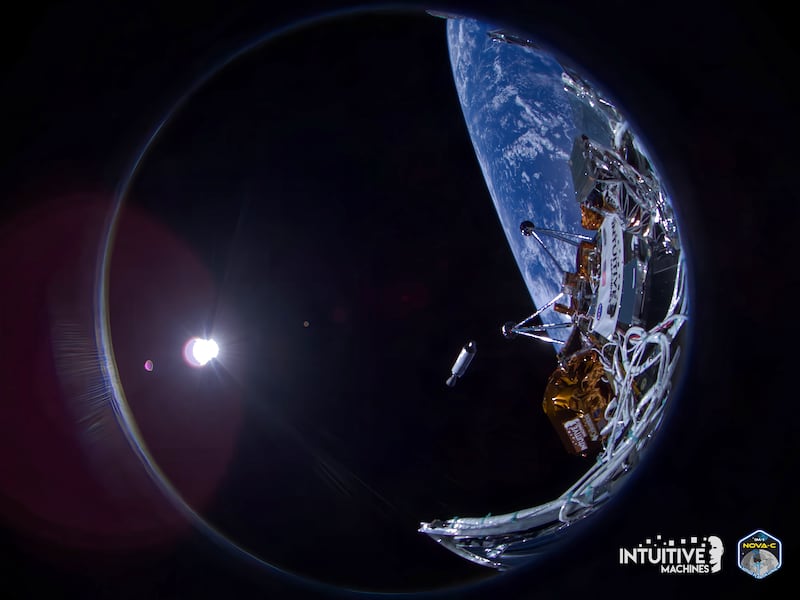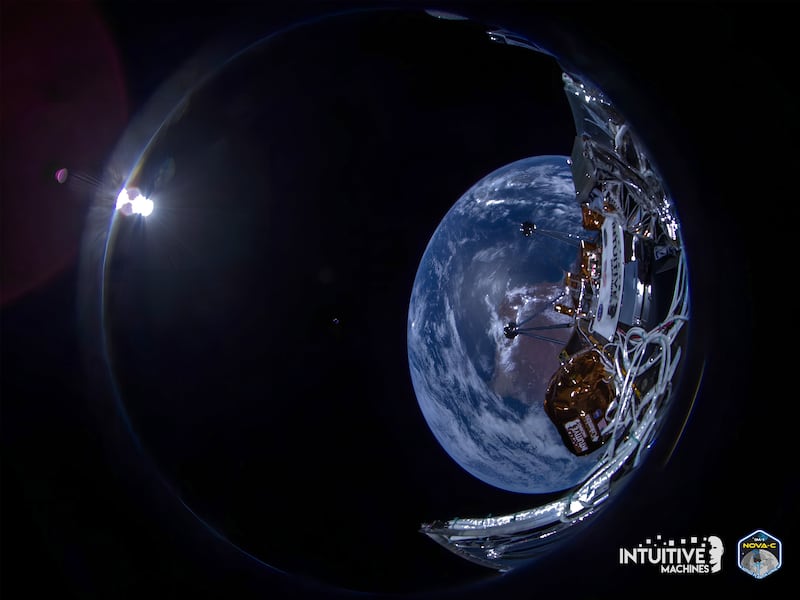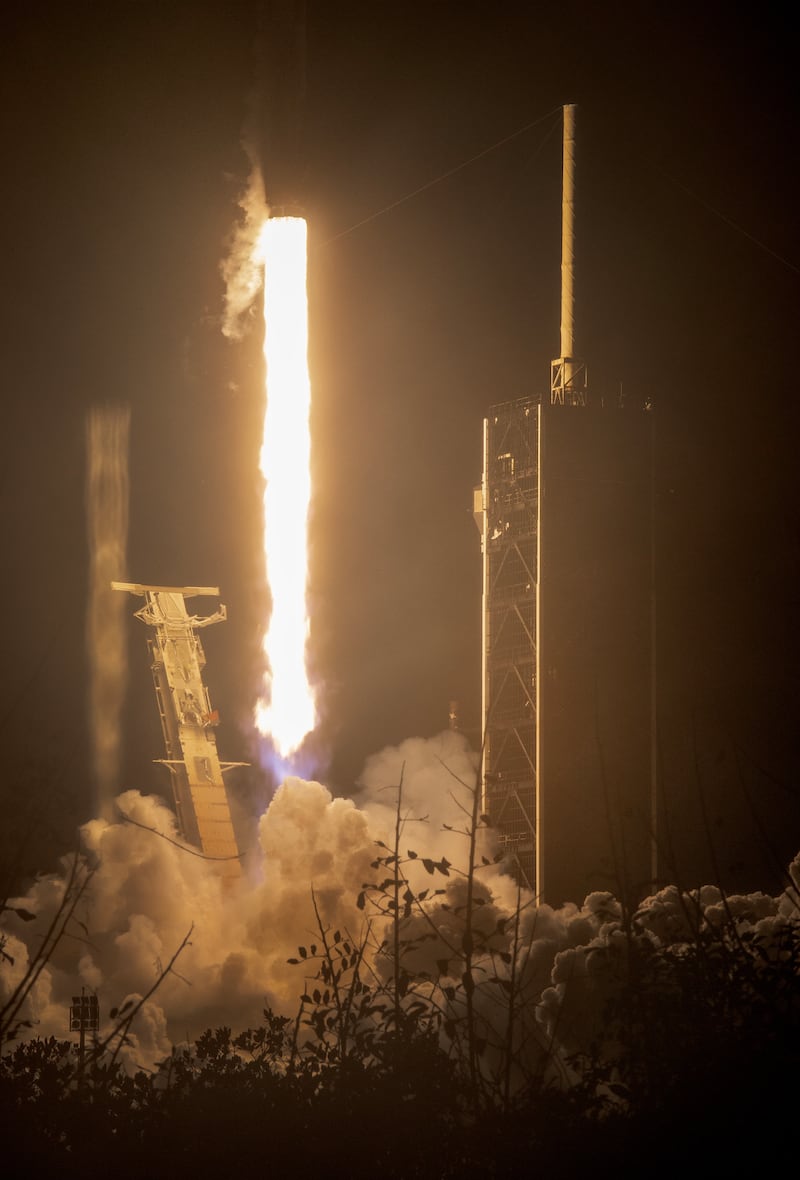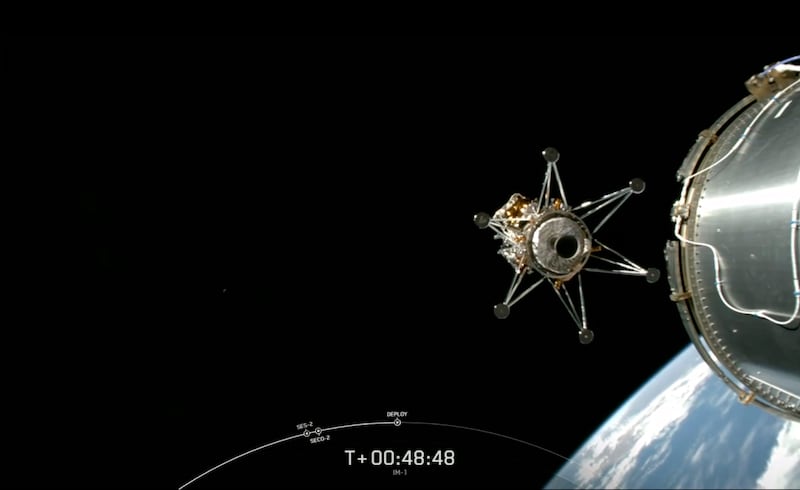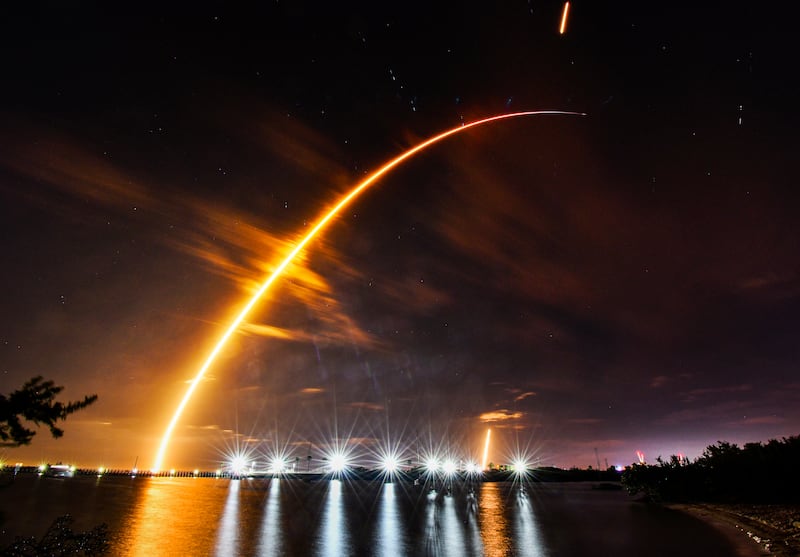A Moon mission that marked the first time a commercial lander touched down on the lunar surface has come to an end, with the craft failing to "call home" after facing night-time temperatures of minus 183°C.
Odysseus, built by Houston company Intuitive Machines, landed on the Moon on February 22 but has been dormant for several weeks.
Its arrival on the lunar surface was the first time since the last Apollo mission in 1972 that an American vehicle reached the Moon. Odysseus broke one of its "legs" when it landed.
Ground control received data for about a week before turning off the lander's systems for the lunar night. The company hoped the craft would reawaken on March 20.
"As of March 23, flight controllers decided their projections were correct and Odie’s power system would not complete another call home," Intuitive Machines said on X. "This confirms that Odie has permanently faded after cementing its legacy into history as the first commercial lunar lander to land on the Moon."
Commercial craft completes first US Moon landing in more than 50 years
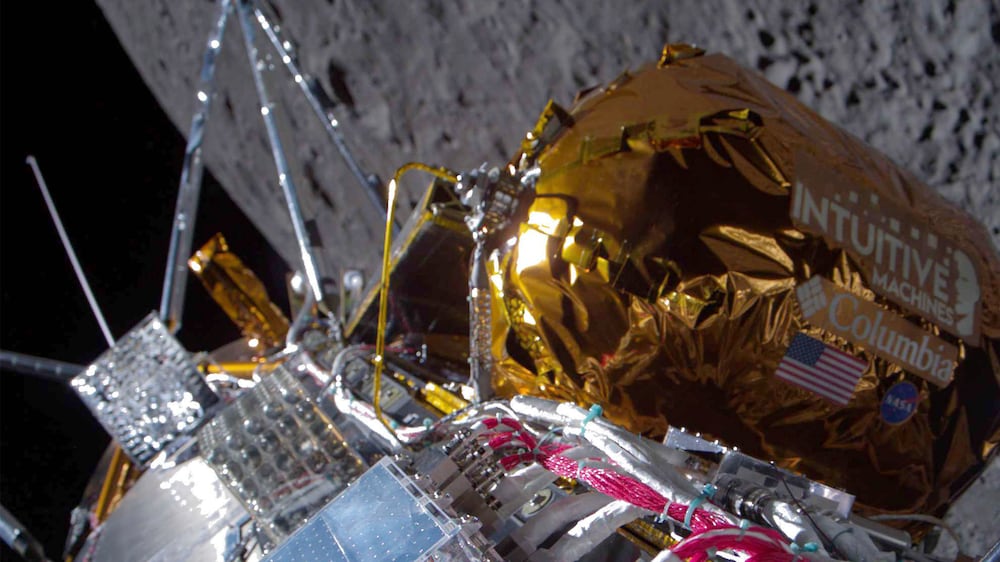
A SpaceX Falcon 9 rocket carried Odysseus into space after blasting off from a spaceport in Florida on February 14.
It began its solo journey towards the Moon and reached its destination in nine days, thanks to a new type of propulsion system comprising supercooled liquid oxygen and liquid methane.
Dramatic mission
But its landing on the Moon brought scenes similar to a Hollywood thriller, when Odysseus's navigation systems stopped working about two hours before it was due to touch down.
The lander's rangefinders, the navigation lasers and camera, were crucial to the landing process because they allow it to detect exactly where it is by taking images of the lunar surface.
After the instruments failed, Intuitive Machines used Nasa technology to save the mission. The US space agency paid about $118 million to the company to carry six payloads to the surface.
Engineers were only supposed to use Nasa's Lidar – light detection and ranging – system as an experimental technology for future Moon missions. But it ended up saving the mission.
Flight controllers used two lasers from the Lidar system as an alternative means to navigate during the 11-minute powered descent to the lunar surface.
During the lander's time on the Moon, scientists used the instruments on Odysseus, including a science camera, to investigate how the lunar surface changes as a result of the engine plume from a spacecraft.
There was also a device to analyse clouds of charged dust particles that hang over the surface at twilight, as a result of solar radiation.
Intuitive Machines joined an exclusive club by landing a craft on the Moon. Space agencies from the US, the former Soviet Union, China, India and Japan have also reached the lunar surface.
Flight controllers at Japan's space agency were surprised when their SLIM vehicle was able to survive the lunar night last month, even though it was not designed to do so. India's Vikram lander and Pragyan rover, meanwhile, failed to survive the lunar night last year.
